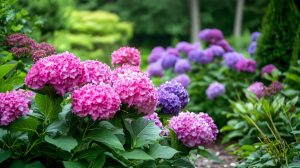In the Garden Blog
Cincinnati's Garden Blog "In the Garden"
Why Are My Plants Not Blooming? Expert Tips for Cincinnati Gardeners
You’re not alone if you’re a Cincinnati gardener frustrated with plants that refuse to bloom. One of the most common questions we hear is, “Why are my plants not blooming?” You bought your plants for their beautiful flowers, but now the blooms are nowhere to be seen. Don’t worry—our expert growers are here to help with five easy tips to get your plants flowering again!
5 Easy Tips to Keep Your Plants Blooming
1. Right Plant, Right Place 
One of the biggest reasons plants don’t bloom is that they’re not planted in the right spot. Consider the needs of each plant:
- Sun Requirements: Is your plant sun-loving, partial shade, or full shade?
- Soil Type: Does your plant need loamy, well-drained, or moist soil?
- Temperature Preferences: Some plants thrive in more excellent spots, while others need the warmth.
Placing your plants in the right location ensures they receive the conditions they need to thrive and bloom.
2. Keep Your Soil Alive and Healthy
Just as you need nutritious food, your plants need healthy soil to bloom their best. Consider improving your soil with:
- Compost
- Rotted Manure
- Pine Fines
- Organic Matter
These soil amendments provide essential nutrients and improve soil structure, giving your plants the boost they need.
3. Balance Nutrients for Better Blooms
Nutrient imbalances, especially too much nitrogen, can prevent plants from blooming. High nitrogen levels encourage leafy growth instead of flowers. Here’s how to balance your plant’s nutrients:
- Check Soil pH Levels: Ensure the pH is optimal for your plants.
- Choose the Right Fertilizer: Use a balanced fertilizer or one lower in nitrogen. This encourages blooming instead of excessive leaf growth.
Pro Tip: For the best results, consistently feed your annuals, roses, and blooming perennials throughout the growing season.
4. Proper Planting Techniques
Improper planting can also affect your blooms. When planting, consider:
- Planting Depth: Plant at the correct depth for each type of plant.
- Spacing: Allow enough space for air circulation to prevent diseases.
- Watering: Ensure your plants have consistent moisture, especially during dry spells.
Following these planting basics sets the stage for healthy, flowering plants.
5. Deadhead and Prune Regularly
One of the easiest ways to encourage more blooms is through deadheading and light pruning. Removing old flowers prevents the plant from setting seeds, which can stop new flowers from forming. Instead, your plant redirects its energy into producing new blooms.
How to Deadhead:
- Pinch Method: Use your thumb and forefinger to pinch off the old flower below the bloom.
- Scissors or Pruners: Cut off the flower and a small part of the stem below it.
- For Long Stems: Remove the entire stem at the base of the flower is on a long stem.
- Hedge Shears for Masses: For large groups of perennials, use hedge shears to trim off old flowers, slightly cutting back into the foliage.
Deadheading is your best friend when it comes to keeping your plants blooming. Make it a regular part of your gardening routine, and you’ll be rewarded with continuous flowers all season.
Need More Help? Contact Us!
Don’t hesitate to reach out if you’re still struggling to get your plants to bloom. Our expert growers are here to help answer all your gardening questions. Ask Natorp’s Plant Experts!
Cincinnati Gardening Made Simple!
With these tips, you can enjoy vibrant blooms and a thriving garden all season long. Happy gardening!
#CincinnatiGardening #GardeningTips #PlantCare #BloomBoost #Deadheading